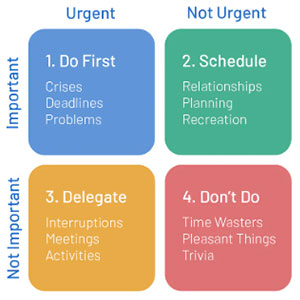
In today’s fast-paced environment, productivity is critical to success. Efficient task management whether in personal or professional settings, impacts the quality of outputs.
Individuals and teams might use an organized approach to prioritizing to improve their productivity, minimize stress, and achieve their goals more efficiently.
This guide explains how prioritizing activities increases productivity and offers tangible solutions for implementation.
What is Task Prioritization?
Task prioritizing entails ranking duties according to urgency, priority, and impact. It makes sure that the most important tasks receive prompt attention while less important ones are planned appropriately.
Individuals who categorize activities systematically might better spend their time and resources, avoiding the traps of procrastination and overload.
Advantages of Prioritizing Tasks
Improved Time Management
Prioritization enables strategic time allocation. When tasks are prioritized, individuals would concentrate on high-value activities rather than being distracted by less essential responsibilities. This results in enhanced efficiency and better utilization of available work hours.
Reduced Stress and Overwhelm
Without a clear strategy, work can become overwhelming, causing stress and burnout. A organized prioritizing strategy helps to organize tasks and create realistic expectations, encouraging a sense of control over the workload.
Enhanced Focus and Productivity
Focusing on critical activities ensures your efforts produce significant outcomes. When people focus on high-priority tasks first, they direct their attention toward what is genuinely important, minimizing distractions and increasing overall productivity.
Effective Decision Making
Prioritization improves decision-making abilities by enabling people to evaluate the significance and urgency of activities objectively. This minimizes hesitation and enables for quick and right decisions that are consistent with goals.
Improved Accountability and Goal Achievement
When activities are methodically prioritized, it is simpler to assess progress and maintain responsibility. This systematic method makes sure that critical deadlines are reached which contributes to the effective completion of personal and professional goals.
Methods of Effective Task Prioritization
Eisenhower Matrix
This technique divides tasks into four quadrants according to urgency and importance. This method directs to do the following.
- Complete urgent and important tasks first.
- Schedule important but not urgent tasks at a later time.
- Delegate urgent but not important tasks to others.
- Minimize or eliminate tasks that are not urgent or important.
This method ensures that people focus their attention on relevant projects rather than responding to distractions.
ABCD Method
- A tasks are critical that requires immediate completion.
- Grade B tasks are important but not urgent.
- C tasks are beneficial but not necessary.
- D tasks are the tasks that can be delegated or eliminated.
This strategy facilitates in the classification of obligations depending on their effect and allowing for a greater emphasis on high-priority tasks.
The 80/20 Rule (Pareto Principle)
This idea states that 80% of results come from 20% of efforts. Individuals should prioritize tasks that generate the most significant effects by identifying high-impact activities reducing time spent on less productive activity.
Time Blocking
Allocating unique time intervals for various tasks reduces distractions and improves attention. Time blocking improves efficiency by requiring undivided attention to key tasks.
Eat the Frog Technique
Inspired by Mark Twain’s philosophy, this strategy suggests starting with the most difficult or disagreeable work. Addressing challenging activities early in the day increases motivation and reduces procrastination.
Steps for Implementing Task Prioritization Effectively
Identify and List All Tasks
Begin by writing down all duties regardless of size or relevance. A detailed task list clarifies the workload and ensures nothing is neglected.
Assess the Importance and Urgency
Evaluate each task’s contribution to objectives and timelines. Use frameworks such as the Eisenhower Matrix or the ABCD approach to efficiently categorize activities.
Set Clear Deadlines
Set reasonable timelines for each activity. Setting time restrictions encourages accountability and keeps projects from dragging forever.
Allocate Time and Resources
Strategically distribute your efforts carefully, allocating more time to high-priority projects. Use time management tactics such as time blocking to stay focused and efficient.
Leverage Technology and Tools
Trello, Asana, and Todoist are digital programs that help you organize and prioritize activities efficiently. Automate reminders and task trackers assist to maintain consistency and avoid gaps.
Review and Adjust Regularly
Priorities can change in response to changing circumstances. Reassessing work lists on a regular basis ensures congruence with changing goals and saves time on obsolete obligations.
Common Mistakes to Avoid in Task Prioritization
Procrastinating on High-Impact Tasks
Avoid delaying important duties in favor of easy ones. Prioritize according to relevance rather than convenience.
Multitasking Excessively
Multitasking might appear to be efficient yet it generally leads to decreased productivity. For best results, focus on one task at a time.
Ignoring Regular Reviews and Adaptions
Task priorities change with time. Failure to analyze and adapt task lists can result in inefficiencies and misplaced efforts.
Overloading Task Lists
Attempting to finish too many tasks at once might cause burnout. Prioritize realistically and delegate as required.
Neglecting Delegation
Not all tasks demand personal attention. Delegating non-essential tasks frees up time for more important obligations.
Task prioritizing is a key skill that boosts productivity, lowers stress, and improves workflow. Individuals and organizations might improve their time management, attention, and goal achievement by using organized prioritizing techniques.
Adopting tactics such as the Eisenhower Matrix, Pareto Principle, and time blocking ensures that work is done strategically and efficiently.
Take command of your calendar, carefully examine obligations, and develop disciplined task management practices to increase productivity. By mastering prioritizing, success becomes more accessible and everyday efforts have the greatest impact.

Leave a Reply